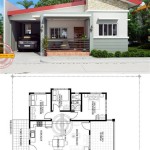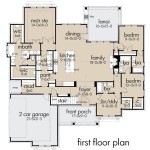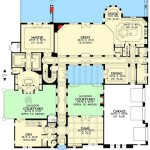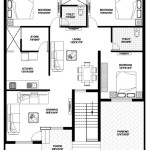Lay Out House Floor Plans: A Comprehensive Guide
Laying out a house floor plan involves much more than simply placing rooms and walls. It entails a meticulous process of space planning, functionality, and aesthetic appeal. This guide provides comprehensive insights into the art of creating well-thought-out and efficient house floor plans.
1. Determine Your Needs and Lifestyle
The foundation of a successful floor plan lies in understanding your lifestyle and needs. Consider how many people will be living in the house, their ages, and their unique requirements. Define your daily routines and identify the activities that take place in each room. This will help you determine the appropriate size and layout of each space.
2. Establish a Logical Flow
A well-designed floor plan ensures a smooth and logical flow of movement throughout the house. The entrance should seamlessly connect to common areas such as the living room and kitchen. Place frequently used rooms, such as the kitchen and bathrooms, adjacent to each other for convenience. Avoid creating dead-end spaces or awkward transitions.
3. Maximize Natural Light
Natural light plays a vital role in creating inviting and healthy interiors. Orient the house to take advantage of daylight throughout the day. Position windows strategically to allow for ample natural lighting in areas like the kitchen, living room, and bedrooms. Consider skylights or clerestory windows to enhance illumination.
4. Define Spaces with Interior Zones
Divide the floor plan into distinct zones based on their function. Create a public zone for living, dining, and entertaining, and a private zone for bedrooms and bathrooms. Establish buffer zones, such as hallways or foyers, to separate different areas and maintain privacy.
5. Consider Traffic Patterns
Anticipate the flow of traffic within the house and design the layout accordingly. Avoid creating bottlenecks or areas where people are likely to congregate. Ensure that there is sufficient circulation space around furniture and access to windows and doors.
6. Optimize Room Size and Proportion
The size and proportion of rooms have a significant impact on their functionality and aesthetic appeal. Determine the optimal dimensions for each room based on its intended use. Avoid creating rooms that are too large or too small. Consider the appropriate ceiling height and the ratio of length to width for a balanced and visually pleasing space.
7. Integrate Storage Solutions
Incorporate ample storage solutions throughout the house. Utilize built-in cabinetry, closets, and drawers to maximize space utilization and maintain order. Plan for designated storage areas in each room, such as pantries in the kitchen, wardrobes in bedrooms, and linen closets in bathrooms.
8. Consider Future Needs
It is prudent to think ahead and consider potential future needs when laying out the floor plan. Plan for flexibility by incorporating adaptable spaces that could be repurposed as needs evolve. For example, a guest bedroom could be convertible into an office or a playroom.
9. Consult with a Professional
For complex or large-scale projects, it is advisable to seek professional assistance from an architect or interior designer. They possess expertise in space planning, building codes, and architectural design. A professional can help you create a floor plan that meets your specific requirements and maximizes the potential of your home.
10. Utilize Floor Plan Software
Various floor plan software programs are available to assist in visualizing and experimenting with different layout options. These tools allow you to create realistic floor plans, adjust dimensions, and experiment with furniture placement. They can be a valuable aid in refining your design and creating a detailed representation of your dream home.

Create Professional 2d And 3d Floor Plans

Design Your Own House Floor Plans Roomsketcher

Small House Designs Shd 2024001 Pinoy Eplans

Design Your Own House Floor Plans Roomsketcher

Heritage House Plan

How To Draw A Floor Plan Live Home 3d

William House Plan Sater Design Collection

22 House Design With Floor Plans You Will Love Simple 9a3

Importance Of House Floor Plans In Architectural Design

How To Read Floor Plans 8 Key Elements A Plan Foyr








